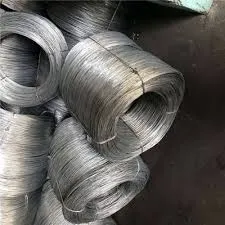welded wire mesh manufacturing process
The Welded Wire Mesh Manufacturing Process
Welded wire mesh is a versatile and widely-used product in various industries, from construction and agriculture to fencing and manufacturing. Understanding the manufacturing process of welded wire mesh allows for better appreciation of its quality, application, and the technology involved.
Raw Materials
The primary raw material for welded wire mesh is steel wire, which can be produced using different grades of steel, including carbon steel and stainless steel. The choice of material depends on the intended application of the wire mesh, whether it requires high tensile strength, corrosion resistance, or specific aesthetic features. Once the appropriate wire type is selected, it is typically rolled into coils for ease of handling and further processing.
Wire Preparation
The first step in the manufacturing process is the preparation of the wire. The wire is drawn to the required diameter through a series of dies, which determines the final strength and thickness of the wire. Standard diameters range from 1.0 mm to 6.0 mm, depending on the application. After drawing, the wire may undergo a cleaning process, often using a solution of acid or other chemicals to remove impurities and oils, ensuring a good weld bond in later stages.
Mesh Forming
Once the wire is prepared, the next step is to create the mesh configuration. This typically involves arranging the wires into either a square or rectangular grid pattern. The spacing between the wires can be customized according to specific requirements, ranging from 5 cm to several meters. The arrangement can be accomplished through automated machinery, which ensures uniformity and precision.
Welding Process
The core of the welded wire mesh manufacturing process lies in the welding operation. The prepared wires are placed in a mesh form and then welded together at the intersections. Two primary welding methods are commonly used resistance welding and electric arc welding.
welded wire mesh manufacturing process

- Resistance Welding This method utilizes heat generated from electrical resistance to fuse the wires together. The wires are pressed against each other and an electrical current is passed through, creating heat that causes the steel to melt at the junctions, resulting in a sturdy bond.
- Electric Arc Welding This method employs an electric arc between two wire electrodes to achieve welding. While it is less common for welded wire mesh, it is utilized for larger and more specialized applications.
Both methods require careful control of the welding parameters — such as current, pressure, and duration — to ensure optimal mesh strength and integrity.
Post-Welding Treatment
After the welding process is completed, the welded mesh undergoes various post-welding treatments. These may include cutting to the desired sizes, surface coating, or galvanization. Galvanization is particularly important for outdoor applications, as it protects the wire mesh from rust and environmental degradation. This process involves dipping the mesh in a molten zinc bath, creating a protective layer that enhances longevity.
Quality Control
Quality control is an integral part of the welded wire mesh manufacturing process. Each batch is subjected to rigorous testing to verify that it meets industry standards. This includes checking the weld strength, wire diameter, and mesh dimensions. Any defects are identified early in the process, ensuring that only high-quality products are delivered to customers.
Conclusion
The manufacturing process of welded wire mesh involves a series of detailed steps, from selecting the raw materials to final quality control checks. Understanding this process highlights the intricate technology and craftsmanship involved in producing durable and reliable welded wire mesh for a variety of applications. As industries continue to evolve, the adaptability of welded wire mesh ensures its place in modern manufacturing and construction.
-
Space-Saving Chain Fence Hacks Vertical Gardening with Cyclone MeshNewsJul.16,2025
-
Innovations in Iron Nail Wire Production for Modern ConstructionNewsJul.16,2025
-
Creative Uses of Wire Netting Fence in Modern Landscape DesignNewsJul.16,2025
-
Barbed Wire Fence Innovations in Anti-Climb TechnologyNewsJul.16,2025
-
Architectural Uses of Umbrella Nails for Aesthetic Roof DesignsNewsJul.16,2025
-
Architectural Uses of Razor Barbed Wire in Secure Urban DesignNewsJul.16,2025




